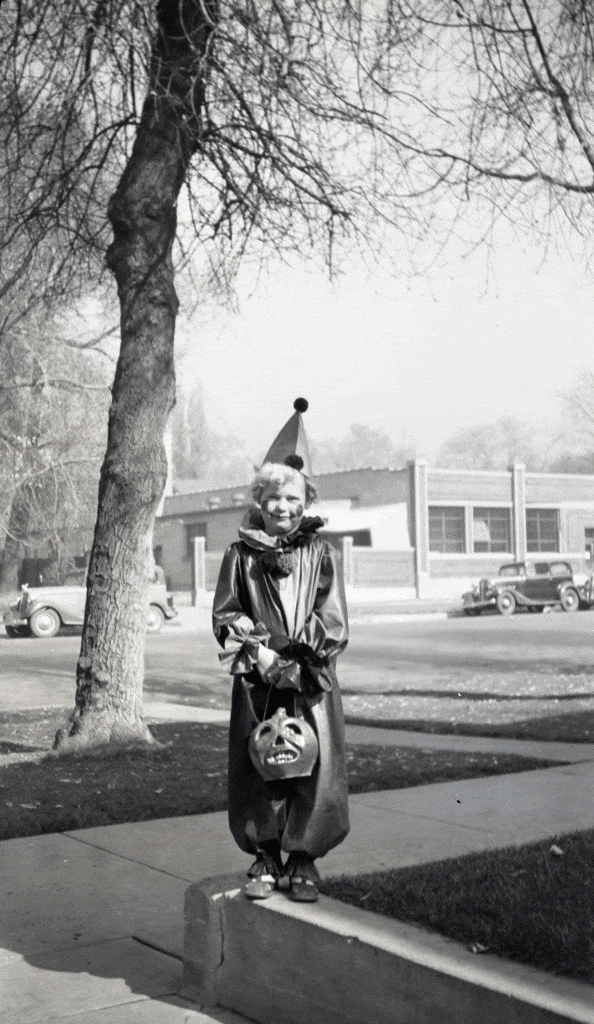When most people think of Halloween, they think of Trick-or-treating. They focus on going door-to-door asking for treats as the whole experience. They forget hijinks are the Trick portion of Halloween.

Credit: Park City Museum, Ethlyn Ann Hansen Collection
Pranks have taken many forms over the years. In the 1930s and 1940s, Halloween participants would go door-to-door and get either a trick or a treat at each stop (hence –“Trick or treat”); one house gave out cheap costume materials like tattered sheets or makeup made from ash or soot, another gave candy, and a third made a short spook house experience in the cellar or front hall. In the 30s, during the Depression, this saved money for everyone involved. In the 40s, this helped everyone during the rationing efforts of WWII. It also kept kids occupied.
Prior to that, pranking was the primary mode of Halloween celebration for most kids. In Park City, the first documentation of Halloween pranking was from 1905. The Park Record reported that “Hallow’een sprites were out in full force” removing gates and loose stone steps from front yards, sending wagons on driverless journeys, and participating in other “harmless mischief.” Removing the gates from fences, relocating or spilling ash cans (waste cans for ashes from furnaces and fireplaces), and soaping windows were some of the most common pranks between 1900 and 1942.
During this time, many a business owner found their windows marked with soap or paraffin wax, which proved difficult to remove in many cases. This was the most common type of prank in Park City – in neighborhoods and on Main Street. In 1921 the Park Record reported that “not a window of a business house on Main Street was missed,” and that the “decoration” of the windows consisted of “allusions… made in writing to the proprietors, none of them at all complimentary.”
While most of the pranks were harmless, more violent or destructive pranking grew in popularity across the country, including in Park City. In 1913, one boy was pulling a prank by holding up other kids with his 22-rifle, like a highway robbery. He actually ended up shooting one boy in the stomach, “causing a bad wound.” By the 1930s many cities considered banning Trick-or-treating.
While there is no evidence of a potential ban in Park City, by 1933 many property owners were not happy about damages incurred on Halloween night and business owners were fed up of cleaning their windows. They appealed to the city marshal who instructed peace officers to arrest children trying to soap windows on Halloween night and noted parents would be held responsible for damages.
A year later, the Park Record editorialized that the business owners were hypocrites for not allowing children to pull off the same pranks they once pulled as youngsters. They ended by saying “it takes all kinds of people to make up a world – but we are a bit partial to those who can laugh rather than rage at childish pranks around Halloween time.”
Happy Halloween to all the pranksters and candy-gatherers! The Park City Museum will close at 3 p.m. on Halloween to participate in Main Street Trick-or-treating and Howl-O-Ween.